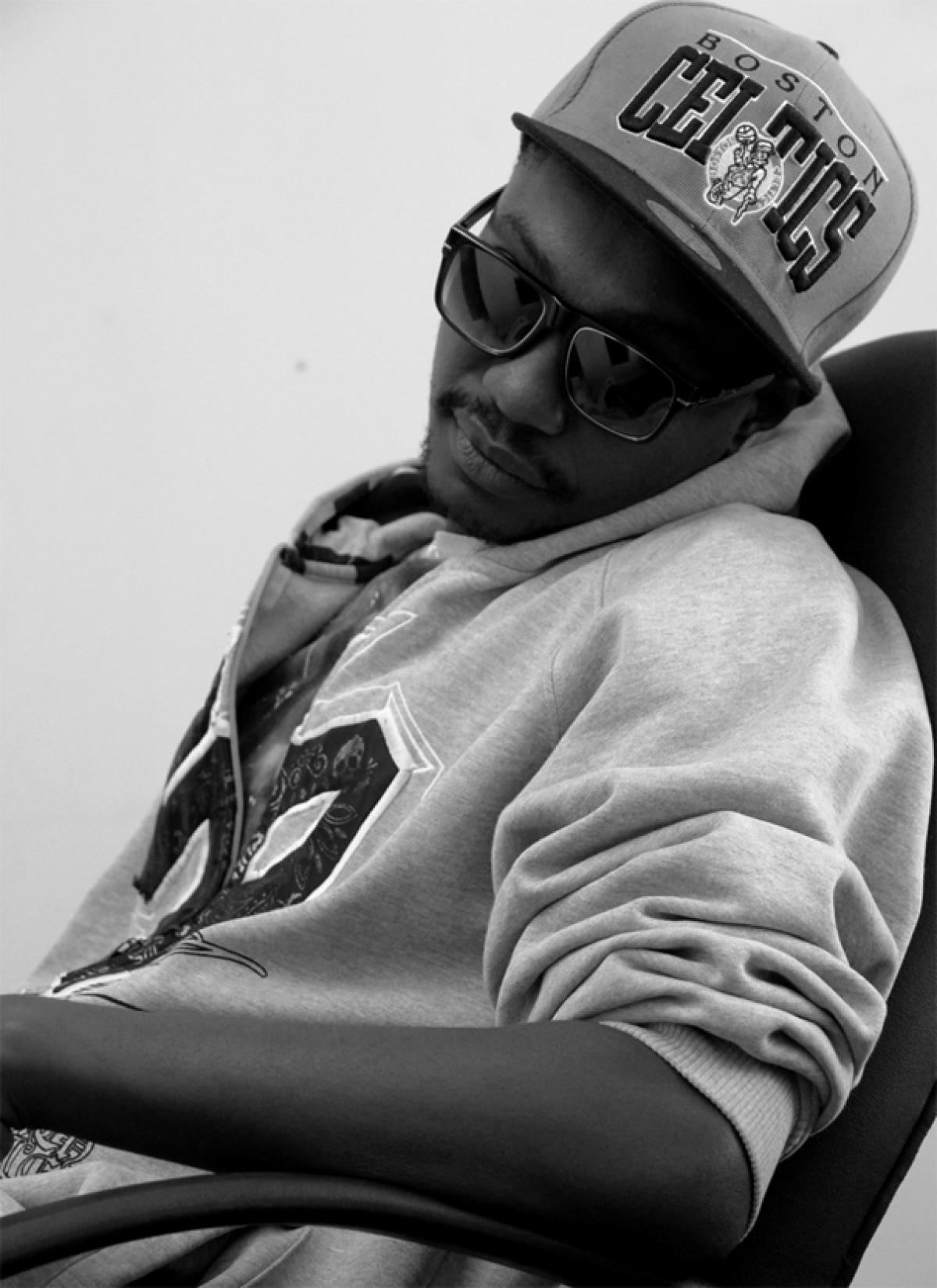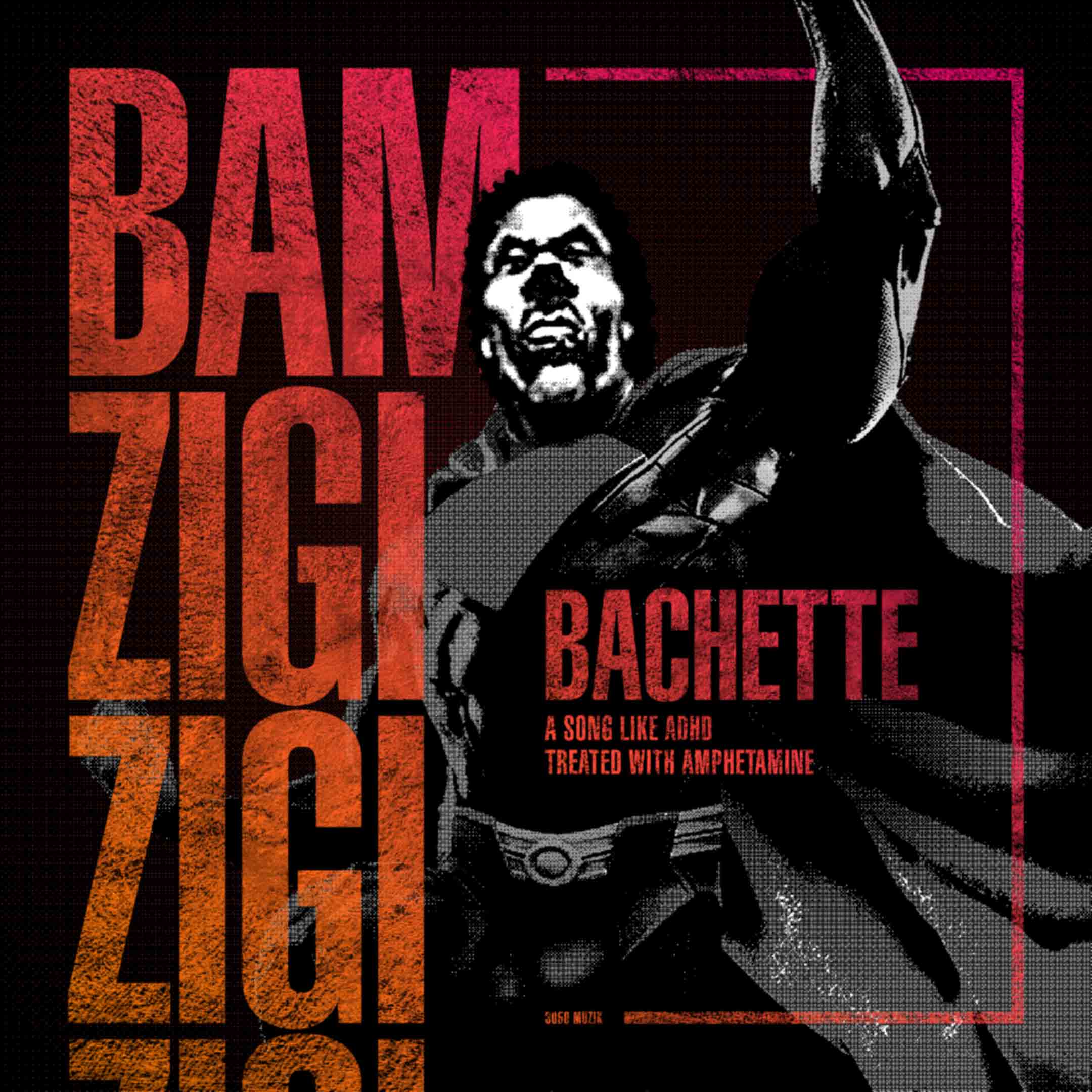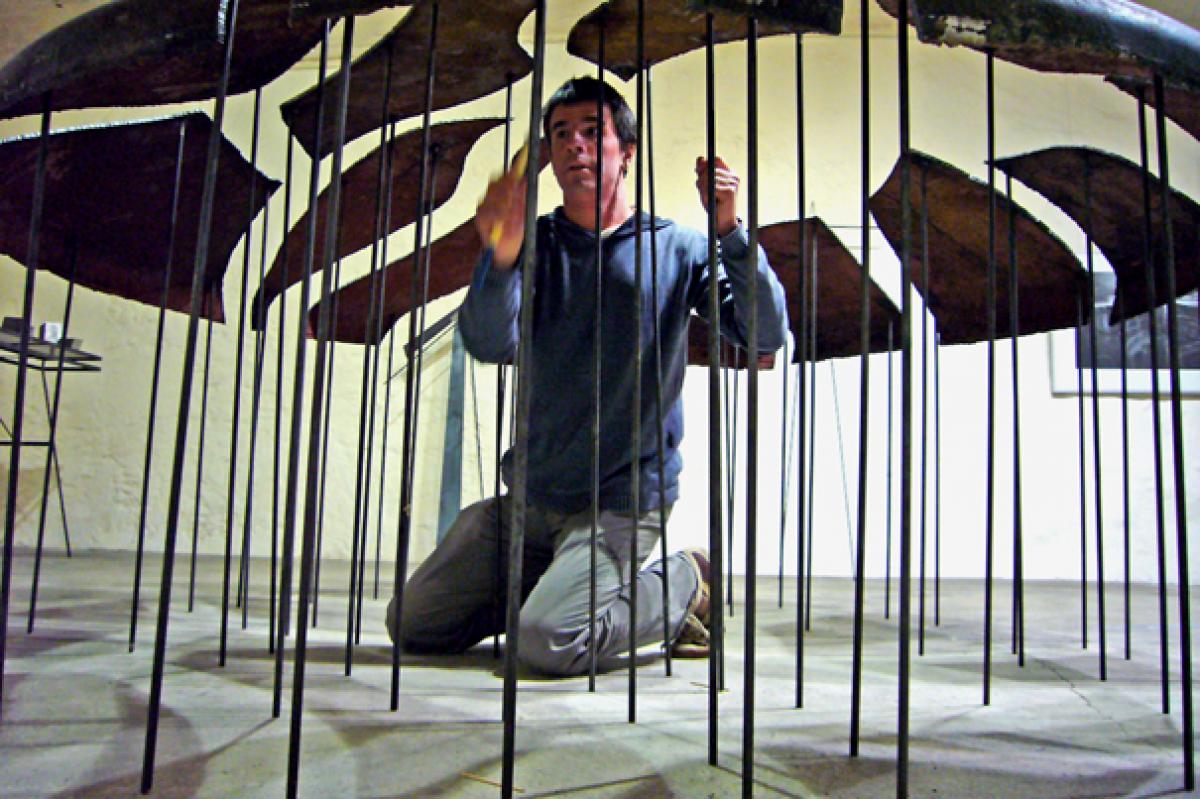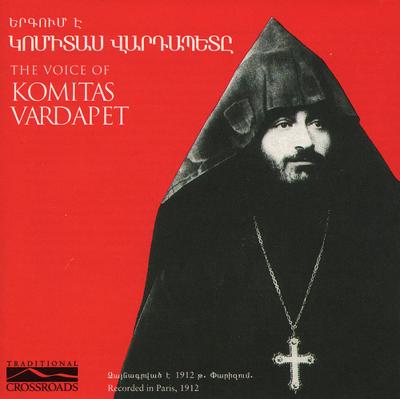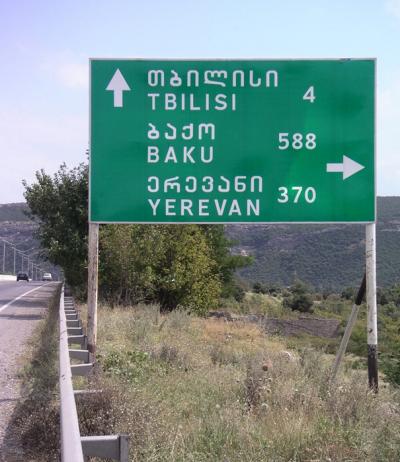Seit mehr als zwölf Jahren führt der Zürcher Flötist sowie promovierte Kultur- und Literaturwissenschaftler Boris Previsic mit seiner Organisation pre-art Kompositionswettbewerbe in Südosteuropa und im Kaukasus durch. Im Gespräch äussert er sich zu Herausforderungen interkultureller Austauschprojekte, zu ideologisch-politischen und musikhistorischen Verortungen von (Neuer) Musik in Südosteuropa und im Kaukasus. Zudem dreht sich das Gespräch um die Frage, inwiefern Erfahrungen aus der arabischen Welt, auf Südosteuropa übertragbar sind.
[Thomas Burkhalter]: In kulturellen Austauschprojekten treffen nicht nur Musikerinnen und Musiker verschiedener Länder aufeinander, es werden auch musikalische Stile und ihre lokalen Bedeutungen durcheinander gewirbelt und in neue musikalische und kulturelle Kontexte übersetzt. In Ihrem Aufsatz «Jenseits des Universellen. Politische Subcodes der Populärmusik in und nach dem jugoslawischen Zerfall» (Precisic 2012) untersuchen Sie, wie Orte, Zeit und Geschichte in ein Stück Musik oder eine Komposition eingeschrieben sind. Wie gehen Sie als Künstler mit solchen Fragen um? Was sind die prägendsten und heikelsten Punkte, die in Ihren internationalen Projekten, etwa in Sarajevo, aufgetaucht sind?
[Boris Previsic]: Ich glaube nicht an die Globalisierung. Globalisierung suggeriert, Kunst entstehe sozusagen ortlos und frei an einem beliebigen Ort in der Welt. Kunst wird aber immer an einem ganz bestimmten Ort produziert, der die Kunst entscheidend prägt. 2001 gründete ich zusammen mit einem Partner vor Ort, mit dem Komponisten und Kompositionsprofessor Aliser Sijaric, das Ensemble Sonemus in Sarajevo. Ein Jahr zuvor organisierte ich die erste Tournee im Kaukasus; dabei habe ich festgestellt, dass selbst ein vermeintlich unpolitisches Projekt sehr schnell politisch werden kann. Wir wollten mit Musikern vor Ort ein Ensemble für Neue Musik gründen und wollten eigentlich ausschliesslich mit Komponisten und Instrumentalisten aus Sarajevo arbeiten. Da es vor Ort aber zu wenige spezialisierte Musiker gab, begannen wir, mit Künstlern aus dem gesamten ex-jugoslawischen Raum zu arbeiten. Das hatte dann sehr schnell auch eine politische Komponente: Das durch den kriegerischen Zerfall Jugoslawiens geschaffene Kleingebilde Bosnien-Herzegowina reichte nicht, um etwas qualitativ Befriedigendes zu produzieren; vielmehr waren wir auf interregionale Kooperationen angewiesen.
[TB]: Können Sie das ein wenig ausführen?
[BP]: Zunächst stellt sich natürlich die Frage, warum sind wir primär in Sarajevo, und nicht in Zagreb oder Belgrad? Belgrad hat eine viel breitere Szene. Das Spektrum reicht von komponierter Musik zu ganz freier Musik. In Zagreb ist es ähnlich. Das hat ganz einfach damit zu tun, dass Belgrad historisch schon seit dem Ende des Ersten Weltkriegs Zentrum Jugoslawiens war. Zagreb wiederum war spätestens seit den 1960er Jahren das zweite Zentrum in diesem geographischen Grossraum und öffnete sich nach den Kriegsjahren 1991 bis 1995 in fast kulturfaschistischer Ausschliesslichkeit für die Kultur in Westeuropa, um sich vom vermeintlich Balkanisch-Byzantinischen zu verabschieden. Hinzu kommt die 1961 gegründete Zagreber Musikbiennale, bei der regelmässig hochkarätige Neue Musik geboten wird. Sarajevo hat das im Prinzip alles nicht zu bieten. Und doch habe ich meine Projekte bewusst in Sarajevo angesiedelt, so etwa auch die Inszenierung einer ins Bosnisch-kroatisch-serbisch übersetzten Version der Histoire du soldat im Jahr 2002, die wir dann auch in Zadar, Zagreb, Belgrad, Skopje und Podgorica aufführten und damit die erste Theatertournee durch die post-jugoslawischen Staaten überhaupt nach den Kriegsjahren bewerkstelligten. Warum ein solches Projekt gerade in Sarajevo produzieren? Sobald ich in Belgrad ein «gesamtjugoslawisches» Projekt ansiedle, heisst es schnell, es handle sich um Jugo-Nostalgie. Produziere ich etwas in Zagreb, so gilt es als separatistisch. Mache ich etwas in Bosnien, dann ist es aus der Opferrolle heraus gedacht. Solche Subcodes und Bedeutungszuschreibungen sind nicht wegzudiskutieren – was immer man macht. Bis heute ist es eine ungelöste Frage, wie sich das Trauma des Jugoslawien-Krieges verarbeiten lässt. Viel gute Literatur umkreist dieses Thema, ohne jedoch eine eindeutige Lösung – beispielsweise in einfacher Schuldzuschreibung – gefunden zu haben. Musik wiederum bleibt in ihrer Areferenzialität immer bis zu einem gewissen Punkt offen. Ich kann sie auf verschiedene Arten interpretieren – im Hinblick auf einen bestimmten Diskurs oder gar auf einen bestimmten Nationalismus.
[TB]: Sie sehen also einen grundsätzlichen Unterschied zwischen Musik und Literatur?
[BP]: Zugegebenermassen lässt sich gerade ein literarischer Text wieder ambivalent lesen. Aber dazu ist auch ab und zu ein bestimmter Interpretationsansatz nötig, um zu zeigen, inwiefern ein Text nicht ideologisch reduziert werden kann. Die Musik hingegen trägt die Ambivalenz von Anfang an in sich. Ein einfaches Beispiel: Warum arbeitet ein serbischer Komponist türkische Melodien in seine Musik ein, auch wenn er sich vielleicht vom osmanischen Erbe lossagen möchte? Paradigmatisch ist in diesem Kontext die «Vertürkung» der Populärmusik. Das kann politisch gedeutet werden – meist will aber der Musiker damit nur seine künstlerische Eigenständigkeit zeigen. Es gibt viele solche Ambivalenzen. Der ideologisierte Komponist will sich vielleicht auf seine musikalische «Muttersprache» zurückziehen, weil er authentisch klingen will, und verstrickt sich dann in die Historizität und Multikulturalität des musikalischen Materials.
[TB]: In Ihrem Artikel schreiben Sie von symbolischen Codes, in denen Orte und vielleicht gar Ideologien in einer Musik präsent werden. Wie gehen Sie in Ihren Projekten mit solchen Codes um?
[BP]: Es gibt grundsätzlich zwei Haltungen: erstens eine Anti-Haltung, die besagt, dass man diesen Codes vorerst einmal ausweicht. Wir ignorieren sie, wir wollen nichts mit ihnen zu tun haben. Wir haben uns zu Beginn bei Sonemus zum Beispiel dafür entschieden, auf jegliche Musik zu verzichten, die irgendwelche «pseudobalkanische» oder «orientalische» Elemente nutzt. Wir setzen voll und ganz auf die Vielfalt der Neuen Musik. Das ist unser Paradigma. Natürlich stellten wir dann sehr schnell fest, dass die vermeintlich universalen Paradigmata der Neuen Musik letztlich ein Produkt der europäischen Hochkultur sind. Das scheinbare Ausweichen bringt uns auf den ersten Blick nicht viel weiter. Es entledigt uns aber des Problems, politisch für die Einen oder Anderen Stellung zu beziehen. Das führt uns dann einfach in anders gelagerte Problemzonen. Eine zweite Haltung bestünde darin, von Anfang an auf die Pseudobalkanismen und -orientalismen einzusteigen. Erfahrungsgemäss handelt man sich aber damit noch die grösseren Probleme ein, weil historisch und interkulturell gewachsene Muster zu den ureigensten erklärt werden und die Frage nach der Qualität nicht einmal gestellt werden darf.
[TB]: Atonale Musik ist demnach nur scheinbar ein offenes Gefäss, weil sie eben europäisch oder auch euro-amerikanisch konnotiert ist. Wird dieser potenzielle Kritik- oder Diskussionspunkt denn bei Musikern, aber auch bei Zuschauern oder in den Medien vor Ort aufgegriffen? Gibt es so etwas wie einen kulturellen Widerstand oder Ressentiments gegen diese «euro-amerikanische» Musik? Und wenn ja, von wem?
[BP]: «Widerstand» ist übertrieben. Aber es gibt Kritik. Wir wollten mit Sonemus explizit mit jungen Komponisten arbeiten. Es ging in erster Linie darum, gute Komponisten zu finden – und nicht darum, einen regionalen Sound zu schaffen. Ich konstatiere immer wieder, dass der Balkan sehr europäisch ist. Wenn man die Kulturentwicklung nach dem Zweiten Weltkrieg betrachtet, dann ist da eigentlich kein Unterschied zu unseren westeuropäischen Entwicklungen auszumachen. Gerade in der Neuen Musik ist in Südosteuropa in den letzten Jahren sehr viel passiert. Im Kaukasus und in Mittelasien richtet man sich aber immer noch an Moskau aus. Insbesondere in Armenien und Usbekistan gibt es weiterhin die Moskauer Schule, die mehr an Schostakowitsch und Schnittke erinnert als an Boulez und Stockhausen. Es handelt sich um eine weniger abstrakte, dafür emotionalere Sprache. Diese überlagert sich mit einer regionalen Spezifik, besonders ausgeprägt in Armenien, das seit dem Trauma 1915/1916 eine eigenständige kulturelle Sprache und Tradition entwickelt hat. In Bezug auf die Musik heisst dann die Quelle oft auch Vardapet Komitas.
Immer wenn ich armenische Musik höre, dann übermannt mich bereits nach ein paar Takten das sonderbare Gefühl, es handelt sich nun um eine typische Ausprägung – im Unterschied zu anderen Nationen in ganz Südosteuropa. Von den Preisträgern des pre-art-Kompositionswettbewerbs, den wir seit 2005 jedes Jahr ausschreiben, sind nahezu die Hälfte Armenier. Ihre Kompositionen überzeugen uns immer wieder in ihrer Eigenständigkeit und Komplexität: Harmonik und Melodik werden in einer ganz eigenen Art und Weise ausgeschöpft. Selbst Komponisten der Neuen Musik, wie beispielsweise das Jurymitglied Roland Moser, sagen, dass sie da immer wieder Neues kennenlernen. Damit lässt sich der Avantgarde-Begriff unterminieren: Es lässt sich nirgendwo mehr eine Spitze erkennen, die überall federführend ist, Avantgarde entsteht heute pluralistischer denn je. Wir können heute sogar festhalten: Wir kommen in dieser Region mit einer spezifischen Avantgarde in Kontakt, die man anderswo nicht findet.
[TB]: Spielen in der armenischen Musik auch Skalen, Melodielinien und Gestaltungsprinzipien eine Rolle, wie man sie zum Beispiel aus der osmanischen oder arabischen Musik kennt?
[BP]: Ein osmanischer Einfluss ist nicht zu leugnen, auch wenn er von der offiziellen armenischen Kulturpolitik bestritten wird. Osmanische Einflüsse stehen neben denjenigen einer «autochthonen» Musik, die sich weitgehend auf den Einfluss der eigenständigen armenischen Kirche, die es schon seit über 1700 Jahren gibt, zurückführen lässt. In Kombination mit «sowjetischer» und «westlicher» Musik des 20. Jahrhunderts entsteht eine faszinierende zeitgenössische Musik.
[TB]: Lassen sich solche «musikalischen Schichten» auch bei Interpretationen atonaler Musik oder bei improvisierter Musik heraushören? Läuft man nicht Gefahr, diese nicht-westlichen Einflüsse zu hören – oder hören zu wollen –, weil der Komponist oder Interpret eben aus Armenien oder Südosteuropa kommt?
[BP]: So ganz genau festhalten kann man das oft natürlich nicht. Man kann aber sagen: «Das erinnert mich jetzt an diese oder jene Tradition.» Es handelt sich dabei mehr um eine Funktion des Erinnerns an musikalische und kulturelle Referenzen; das kulturelle Gedächtnis klingt an. Die Geschichtlichkeit eines Ortes spiegelt sich in der Musik wider, daran glaube ich fest. In der Musik sind verschiedene «Sprachen», verschiedene «Kulturen» ineinander verschichtet. Aber natürlich zählt auch, wo ein Komponist in seiner persönlichen Entwicklung steht – das ist mir beispielsweise an der Tribina kompozitora, dem jährlich stattfindenden Festival für zeitgenössische Musik in Serbien, immer wieder aufgefallen. So trifft man in Belgrad im Prinzip auf zwei musikalische «Sprachen»: die der alten Generation, sagen wir mal der jugoslawischen Generation, die durchwegs mit der serbisch-nationalistischen Generation gemeinsame Traditionslinien aufweist; und die der jüngeren Generation, die eben über den Zaun hinaus schaut und Anschluss sucht – im Prinzip in viele Richtungen: sei es nach Russland, sei es nach Westeuropa, sei es als nicht-nationalistische Rückwendung auf ein bestimmtes Traditionsgut. Absurd finde ich, dass sich die alte Generation gerne auf eine postmoderne Beliebigkeit beruft und darum häufig neobarocke oder neoklassizistische Werke schafft im Zeichen einer angeblichen postmodernen Zitathaftigkeit. Solche Komponisten waren aber ganz gut im Milosevic-Regime aufgehoben, weil ihre Musik auch keine kritische Sprengkraft hatte. Und dann gab und gibt es eine andere musikalische «Sprache», die bis 2001 im öffentlichen serbischen Diskurs nicht geduldet war und die diese musikalische Beliebigkeit explizit verneint. Anzufügen im Bezug auf die musikalische «Sprache» ist vielleicht noch folgende Notiz: Musikalisches Zitat oder Verweise sind nicht per se gut oder schlecht, sie sind polyvalent, sie können vieles bedeuten. Es kommt eben darauf an, wie sie verhängt sind, in welchem Kontext sie stehen und entstanden sind. Genau dasselbe Zitat kann das Eine aber auch dessen Gegenteil behaupten, das habe ich ja gerade in meinem Artikel über die Populärmusik zeigen wollen.
[TB]: Was sind denn die musikalischen Ziele und Kriterien dieser neuen Komponistengeneration in Südosteuropa? Will sie vor allem eine eigenständige Musik schaffen oder hat sie auch einen politischen Anspruch?
[BP]: In Baku arbeiten wir mit dem Komponisten Firudin Allahverdi, der in unserem Wettbewerb von 2008 den ersten Preis gewonnen hat. Allahverdi ist politisch aktiv in der Menschenrechtsszene und ist somit Teil der Generation, die sich bewusst und explizit gegen die Politik des verkrusteten Regimes Aserbaidschans wehrt. Ich bin überzeugt, dass der arabische Frühling auch Auswirkungen auf Mittelasien, auf den Kaukasus und den Balkan haben wird. Ich kenne in der ganzen Region zahlreiche Komponisten, die sich politisch artikulieren; dank Facebook kann ich deren Aktivitäten täglich verfolgen. Politik spielt direkt in unsere Projekte mit usbekischen, türkischen und armenischen Komponisten hinein. In Armenien wurde es uns verboten, die Musik des jungen Türken Emre Sihan Kaleli oder vom bereits genannten Firudin Allahverdi aus Aserbaidschan aufzuführen. Dabei bekamen auch wir den starken Druck zu spüren, den das Regime auf Musiker und Musikszene ausübt. Die betreffenden Komponisten umgehen diese Barrieren, in dem sie an Kleinstfestivals zusammen auftreten – abseits des offiziellen Rahmens.
[TB]: In der arabischen Welt habe ich oft mitbekommen, wie sich Musiker und Komponisten darüber streiten, ob Kunst als Kunst oder als Protest verstanden werden soll. Viele der jungen Künstler haben sich abgewendet von der Protestmusik-Tradition der 1970er und 1980er Jahre. Sie verstehen bereits das Fokussieren auf musikalische Qualität als Protest. In einem von Kommerz und Propaganda geprägten Umfeld leuchtet ein solcher Ansatz durchaus ein – auch wenn er für uns vielleicht simpel erscheinen mag. Und tatsächlich wurden und werden diese Künstler von lokalen Politikern immer wieder auch politisch verortet – manchmal einfach nur, weil sie von europäischen Institutionen unterstützt werden (wenn auch oft minimal). Sie seien «Handlanger des Westens», heisst es dann manchmal sehr schnell. Gibt es ähnliche Diskussionen auch auf dem Balkan und im Kaukasus?
[BP]: Ja, die gibt es, und zwar sowohl in der ernsten als auch in der populären Musik. Bei unserer Organisation pre-art geht es eigentlich primär um musikalische Qualität. In der Realität ist dieses Kriterium aber manchmal schwierig hochzuhalten. Oft müssen wir unsere Qualitätskriterien, die sich an einer avancierten, vom verwendeten Material her betrachtet abstrakten und neutralen Musik orientieren, revidieren. Einige Künstler sind zwar seit Jahren in der europäischen Förderszene integriert, sie haben uns aber nicht überzeugt. Gleichzeitig durften wir – gerade über unseren Wettbewerb – Künstler und Künstlerinnen ausfindig machen, die bislang nicht beachtet worden sind. Von den Förderern – etwa der Pro Helvetia, dem Goethe-Institut oder der Adenauer-Stiftung – werden einem ja immer diese oder jene Künstler empfohlen, die manchmal passen, manchmal auch nicht.
[TB]: Ist das eine Kritik an der Kulturförderung? Ist die manchmal zu hörende Kritik, es würden immer dieselben gefördert, aus Ihrer Sicht berechtigt? In der arabischen Welt sagen zynische Stimmen, es würden vor allem diejenigen Künstler gefördert, die Gesuchseingaben auf Englisch schreiben können.
[BP]: Einige der von uns ausgezeichneten Komponistinnen und Komponisten sprechen keine im Westen geläufige Sprache. So hatten wir beispielsweise einen Armenier, der in Griechenland aufgewachsen ist und weder Französisch noch Englisch oder Russisch beherrschte. Einige waren durch uns auch zum ersten Mal in der Schweiz. Sie sind von der Förderszene nicht wahrgenommen worden, weil die Förderer nicht selten auf äussere Projektmerkmale statt auf musikalische Qualitätsmerkmale setzen. Der Vorteil von pre-art ist: Wir haben immer einen direkten und engen Kontakt mit den Künstlern und Künstlerinnen.
[TB]: Das sind wahrscheinlich mit die Stärken eurer Projekte. Ihr sucht den direkten Kontakt vor Ort und ihr orientiert euch an musikalischen Merkmalen. Zudem arbeitet ihr langfristig – denn so schnell findet man die spannenden Künstler ja normalerweise nicht.
[BP]: Einige der Preisträger, die wir vor acht, neun Jahren ausgezeichnet haben, aber auch Instrumentalisten, die wir punktuell längerfristig gefördert haben, sind heute bereits Professoren in Sarajevo, Stockholm oder Jerewan. Die Komponistin Darija Andovska ist heute zum Beispiel Professorin in Skopje. Sie ist uns schon 2001 aufgefallen, und wir haben ihr dann geholfen, in der Schweiz zu studieren. Ähnliches ist auch mit Instrumentalisten aus Sarajevo und Kragujevac passiert. Dieser Rückfluss von Kompetenz und Wissen in die Herkunftsländer ist vielleicht das wichtigste Kennzeichen unserer Projekte. So sehr der Begriff der «Nachhaltigkeit» heute auf alles und jeden angewendet wird und damit völlig verwässert wird, so sehr sehe ich ihn in pre-art verwirklicht.
[TB]: Stichwort «interkultureller Dialog»: Was sind für Sie da die «To Do’s» und «Not To Do’s»? Was sind die «Lessons Learnt»?
[BP]: Ich glaube, die Langfristigkeit des Gesamtprojekts ist der wichtigste Faktor. Daran krankt insbesondere die Event-Kultur – schnell da, schnell dort ein Auftritt, und damit hat sich’s oftmals. Unser Anfang war eine Armenien-Tour mit Armeniern aus Paris. Da hat der Kulturaustausch überhaupt nicht funktioniert. Die Tour war von Exil-Armeniern organisiert worden, und diese Auswanderer galten in der Heimat prinzipiell als Verräter. Wir wiederum fühlten uns völlig fehl am Platz. Die Konzerte haben an sich gut funktioniert, aber wir fühlten, dass wir keinen Kontakt zu den Leuten vor Ort aufbauen konnten. Wir wussten nicht, wie die lokale Szene funktioniert, wie man hier Komposition lehrt, wie das Niveau der Komponisten ist, ob sie über gute Instrumente verfügen etc. So gingen wir halt mal ins Konservatorium und schauten nach: Wer unterrichtet da? Und wie? Man hört sich Konzerte an und schaut, was dem Publikum warum gefällt. Erst an diesem Punkt kann man zu überlegen beginnen, was für eine Art von Austausch Sinn machen kann. Was brauchen die Musiker? Partituren, Instrumente? Durch diese Arbeit haben wir allmählich enge Kontakte aufbauen können. Auch als Literaturwissenschaftler betreibe ich ja «interkulturelle» Literaturwissenschaft. Doch was bedeutet eigentlich Interkulturalität? Ich zweifle am kulturellen Paradigma. Denn zu oft wird alles auf Kultur reduziert – und das kann verheerende Folgen haben, wie wir in Jugoslawien gesehen haben. Der dauernde Fokus auf ethnische, religiöse, sprachliche Differenzen lässt manchmal alle Gemeinsamkeiten vergessen. Das «interkulturelle Verhältnis» zu meinem Schweizer Nachbar kann angespannter ausfallen als dasjenige zu einem Komponisten in der mittelasiatischen Steppe. Dieser interkulturelle Vermittlungswunsch basiert oftmals auf völlig falschen Annahmen. Ich gehe zunehmend davon aus, dass die systemische Ausdifferenzierung der Moderne innerhalb scheinbar geschlossener kultureller Einheiten wie beispielsweise den Nationen viel grösser ist als die Huntington’schen Verwerfungen zwischen den Kulturen. Für die Arbeit vor Ort ist es doch ganz einfach: Man muss schauen, wo die Leute stehen, was sie in erster Linie beschäftigt, an welchen Punkten man sich trifft, wo man zusammen arbeiten kann. Natürlich kann man eine solche Arbeit mit der Attribuierung «interkulturell» schönreden, aber sie ist gleichzeitig mehr und weniger als das.
[TB]: Über musikalische Fragen hat man sicher einen idealen ersten Einstieg, ein gemeinsames Nischeninteresse. Die Unterschiede werden erst dann spannend, wenn man allmählich feststellt, hier und dort arbeitet dieser Musiker anders. In Beirut fühlte ich mich musikalisch nahe mit den Musikern der Szene für improvisierte Musik oder mit Medienkünstlern verbunden. Je länger man sie kennt, desto mehr erkennt man aber auch Unterschiede.
[BP]: Man lernt in einem solchen langjährigen Prozess allmählich das «andere» Denken dieses Künstlers oder dieser Künstlerin kennen, die unterschiedlichen Ansätze im Gemeinsamen. Nehmen wir zum Beispiel das Stück eines armenischen Komponisten, das wir auf unserer zweiten Armenientournee 2001 gespielt haben: Taugh of Angels des Kompositionsprofessors Stepan Rostomyan. Je exakter man seine Partitur interpretierte, desto schlechter klang sie. Der Komponist betonte in der Probenarbeit immer wieder, die Musik müsse «ganz einfach» im Raum klingen. Schweizer Mitmusiker hatten Kopfschmerzen gekriegt und mussten sich hinlegen. So wurde interkulturelle Erfahrung körperlich erlebbar. Wir mussten unsere Paradigmen von «Präzision» über Bord werfen, damit diese Musik zu «funktionieren» begann.
[TB]: Was haben Sie als Musiker von diesen interkulturellen Projekten in den letzten Jahren gelernt?
[BP]: Die Hauptsache erfährt man immer auf Nebenschauplätzen und an informellen Treffen, man braucht eine grosse gedankliche Flexibilität und darf bestimmte Dinge oder Vorfälle nicht vorschnell kategorisieren. Man muss offen sein und erst mal alles zulassen, dann aber schon auch wieder Grenzen setzen, welche die eigene Position aufzeigen. Je mehr man auf andere Musiker zugeht, desto mehr muss man auch wissen, was man selber will. Das hat mir auch persönlich viel geholfen: Wie positioniere ich mich? Welche Musik mache ich, welche mache ich nicht? Und natürlich auch in Bezug auf die akademische Reflexion: Wo sind meine theoretischen Interessen? Ich kann heute auch sagen, warum mich was nicht interessiert.
[TB]: Was sind denn Ihre offenen Fragen?
[BP]: Das Thema Interkulturalität bleibt für mich eine Knacknuss in Bezug auf das wirtschaftliche Gefälle und die Stereotypen. Inwiefern werde ich in Südosteuropa nicht auch einfach identifiziert mit diesem Staat Schweiz und diene dann als Projektionsfläche? Für das westliche Paradies? Diese Fragen auch vor Ort offen zu diskutieren und zu reflektieren, finde ich unheimlich wichtig.
[TB]: Wie lauten die Antworten?
[BP]: Fragen, Zusammenhänge aufzeigen, den Geldstrom partiell umleiten.
[TB]: Als Schweizer Künstler bieten Sie – nüchtern betrachtet – potenziellen Zugang zu einem internationalen Absatzmarkt.
[BP]: Ja, klar.
[TB]: Man kann sich natürlich fragen, was es überhaupt bringt, wenn ein Schweizer mit einem Musiker aus dem Balkan ein Projekt macht. Die zwei Musiker verstehen sich unter Umständen komplett falsch. Der Schweizer meint, er mache interkulturelle Musik und diene vielleicht sogar dem interkulturellen Dialog – jedenfalls schreibt er das in sein Dossier für die Kulturförderer. Sein Mitmusiker hingegen wird vor Ort vielleicht rechtskonservativ verortet. Darf oder soll man da so spitzfindig sein? Oder muss man sagen: Musik ist doch einfach ein Spiel. Nehmt das nicht so ernst, bitte.
[BP]: Ich glaube, es ist nicht egal. Musik ist zentral in Konflikten. Darum ist es sehr wichtig, dass man, wenn man sich auf diese Musik einlässt, auch weiss, wofür sie steht. Wenn man sich beispielsweise für eine bestimmte Art von «World Music» interessiert, dann finde ich es nicht in Ordnung, wenn man einfach sagt: «Ich finde das coole Balkan-Musik, mir gefällt die Rhythmik, mir gefallen die Trompeten in den Filmen von Kusturica». Mir gefällt diese Musik auch. Doch gleichzeitig muss ich Kritik anbringen können, aufzeigen können, an welchen Punkten mit einer solchen Musik eben auch Ideologie betrieben wird, die sich gerade nicht mit einem linksliberalen Gedankengut vereinbaren lässt. Wenn man sieht, wie sich Kusturica vom weltoffenen zum national kleinkarierten Regisseur entwickelt und sein ganzes Schaffen durch und durch kommerzialisiert hat, dann überkommt einen schon Wehmut an eine gute alte Zeit. So versuche ich auch in meiner jüngsten Monographie, die im Rahmen meiner Habilitation entstanden ist, beispielsweise zu zeigen, inwiefern gerade ein unkritischer bzw. ideologisierter Linksintellektualismus in Österreich sehr viel dazu beigetragen hat, dass man die Jugoslawien-Krise oder den Zerfall von Jugoslawien immer noch nicht verstanden hat. Ein Krieg entwickelt immer eine Eigendynamik, welche die vermeintlich klaren Diskurslinien und Fronten sehr schnell verwischt. In einem solchen Kontext einen klaren Kopf zu bewahren und historisch ganz klare Differenzierungen vorzunehmen, ist und bleibt schwierig und unsere Aufgabe als Kulturwissenschaftler wie auch als Kunstschaffende.
Über pre-art
pre-art ist hauptsächlich an den Rändern Südosteuropas tätig, wo seit der Wende nach 1989 tiefschürfende politische, soziale und ökonomische Verwerfungen entstanden sind. [...] Die Konflikte werden insbesondere kulturell, d.h. vorab religiös und ethnisch, gerechtfertigt, obwohl es in den meisten Fällen nur um den Machterhalt einer bestimmten Elite und/oder einer bestimmten Grossmacht geht. [...] So setzt pre-art bewusst bei den kulturellen Parametern an, welche sich nicht in ein nationales oder religiöses Narrativ einbinden, sondern sich immer schon in einem Spannungsverhältnis dazu befinden.
Es geht pre-art darum, Kultur als zukunftsgerichtete Notwendigkeit menschlichen Ausdrucks zu fördern, die von sich aus machtpolitische Gräben überbrückt. Denn Kulturprojekte sind immer politisch und finden nie in einem apolitischen Raum statt. [...] Aus diesem Grund fördert pre-art zeitgenössische Kunst, welche sich in aktuelle Diskurse einschreibt. Tradition soll nicht als identifikatorische Zuordnung verstanden werden. Vielmehr müssen stets ihre Erfindung und damit ihre Geschichtlichkeit, aber auch die darin enthaltenen Überschreibungen reflektiert und offengelegt werden. Reproduktion von Stereotypen findet keinen Eingang in unsere Arbeit.
